Putting learning into practice: using research to reach people at risk of NTDs in Nigeria
Neglected tropical diseases (NTDs) are a group of parasitic and bacterial infections that affect some of the world’s poorest people and can cause severe and lifelong impairment.
Nigeria carries around 25 per cent of Africa’s NTD burden, making it one of the most endemic countries in the world for these debilitating conditions. An estimated 100 million people in the country are at risk for at least one NTD and there are several million cases of co-endemicity where people are infected with more than one of the NTDs. The Federal Ministry of Health (FMOH) in 2013 launched a plan to control or eliminate the seven most common NTDs by 2020.
With less than a year to that target, many people have not been reached due to gaps in funding, logistical challenges and in some cases, misconceptions about the treatments themselves.
However, progress is being made and research is playing a key role in helping to eliminate the diseases. Sightsavers and partners work alongside the ministries of health in affected countries to deliver NTD treatment programmes such as the UK aid-funded UNITED, SAFE and river blindness/lymphatic filariasis elimination programmes.
Helping to support work like this in Nigeria, as well in three other countries, is COUNTDOWN, a research group that brings together organisations including the Liverpool School of Tropical Medicine, Sightsavers and the FMOH. These groups are investigating cost-effective and sustainable solutions needed to control and ultimately eliminate the NTDs.
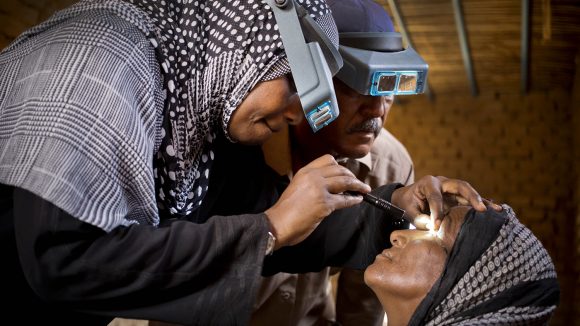
Our work to treat and prevent NTDs
We help to fight five debilitating diseases that affect more than a billion people worldwide.
Sightsavers and NTDs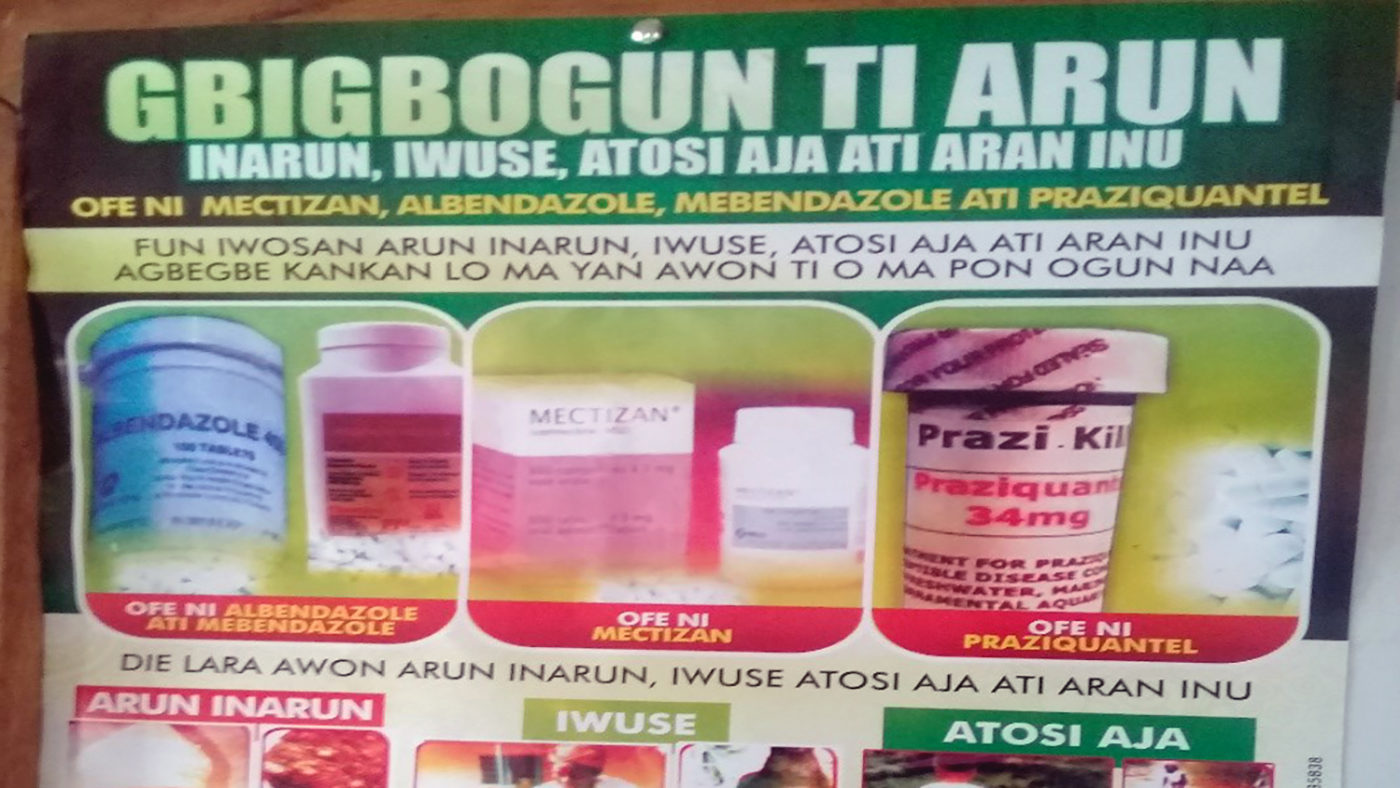
An NTD awareness campaign guided by research
Ogun State, in the south-west of Nigeria, is one of two states in the country where COUNTDOWN has been working to understand how the NTD programme is functioning and how evidence-based approaches may help to speed up progress against these diseases. The NTD control unit of the ministry of health recently organised a sensitisation and awareness campaign across the 20 local government areas (LGAs) to encourage people to take preventative treatments for the diseases which includes river blindness, schistosomiasis and lymphatic filariasis.
Staff from the Ministry of Information joined their counterparts from the Ministry of Health to walk through streets in the state’s capital calling out messages, distributing flyers, and showing posters about the medication used to treat the diseases.
The campaign included a radio programme, featuring experts from the university who discussed the signs and symptoms of several NTDs and explained how to prevent them, as well as debunking myths about the preventive medication.

How COUNTDOWN’s research was put into practice during the campaign
1. Understanding the needs of target audiences
The project started by carrying out a situational analysis to identify the views and needs of communities that the NTD programme aims to reach. Through its Participatory Action Research approach, COUNTDOWN has continued to bring healthcare professionals together to focus on the community’s perspectives on these programmes.
In doing so, we used interviews, participatory workshops and focus groups. The local volunteers and teachers, who carry out the essential work of giving people preventative treatments, also took part in mock training exercises using existing communication materials. Feedback sessions from these activities revealed opportunities to improve the materials, which were updated to use the local language and have clearer, more appealing visual aids.
2. Identify where target audiences meet and how they find out information
To leave no one behind, the COUNTDOWN team was led on a walk by community leaders, during which they interacted with different groups of people across age and gender. They identified key places where people gather to do business, socialise, worship and collect information, and the team used these findings to select popular communication channels, such as radio, and strategic locations to distribute preventative treatments, such as the large Kuto market in the state capital, Abeokuta.
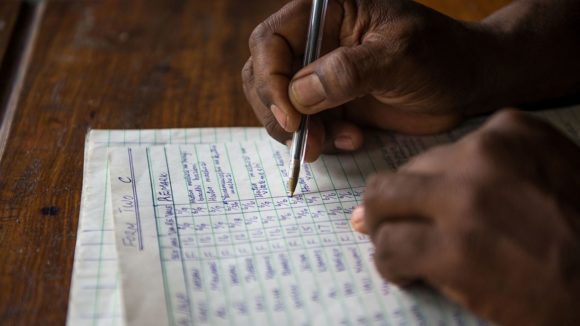
More about COUNTDOWN
Learn how participatory research is helping us to tackle neglected tropical diseases.
Read the blog
3. Adapt to change and try to address challenges head on
A key theme identified by the project is that new challenges emerge over time: one recent example is ‘fake news’ about preventative treatments. Community volunteers and teachers reported that they often had to dispel rumours that preventative treatments are harmful. As a result, the radio show addressed these issues head on, explaining the need to take the medicine for a long time as a preventive measure, and also dispelled specific rumours about side effects of the treatments.
It was found also that communities are sometimes not consulted on the selection of volunteers, timing and location of treatment distribution. This campaign made time for people who had missed or had decided not to take part in previous campaigns to have their questions answered and their concerns addressed by staff from the NTDs control programme.
The global health community is always looking for ways to put research into practice as smoothly and quickly as possible, and it’s exciting to see how COUNTDOWN’s holistic approach to research is being applied in Ogun. The project highlights how research and participatory methods allow the voices of communities to be heard. Through research, one of our aims is to give communities more say in how they take part in NTD programmes, which leads to greater acceptance of preventative treatments that protect people from painful and poverty-trapping NTDs.
Author
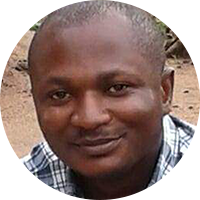 James Yashiyi Nuphi
James Yashiyi Nuphi
James is a social scientist at Sightsavers and COUNTDOWN, and is based in Nigeria.
The global health community is always looking for ways to put research into practice as smoothly as possible
Read more about Sightsavers’ research projects
Visit the research site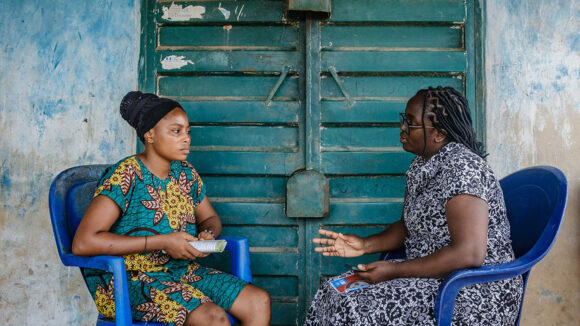
Why community collaboration is important in our research
Our research on female genital schistosomiasis has highlighted the need to establish a safe and supportive environment for participants when studying sensitive topics.

The key to inclusive education is engaging organisations of people with disabilities
Collaborating with organisations of people with disabilities (OPDs) on our inclusive education projects has earned the Sightsavers-led Inclusive Futures consortium a Zero Project Award in 2024.
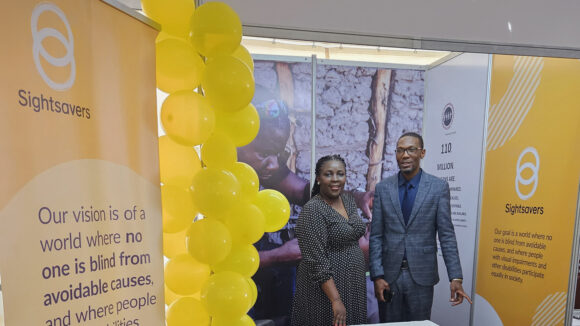
Six takeaways from the International Conference for Public Health in Africa
Sightsavers’ Hortance Manjo shares insights from the event in Zambia, which highlighted eye health for the first time.